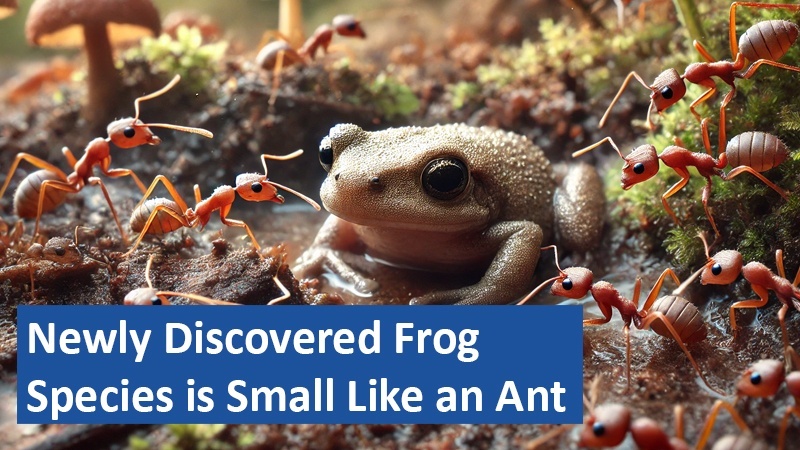Scientists in Brazil have identified a tiny new frog species in the Atlantic Rainforest, barely visible to the naked eye. Known as Brachycephalus dacnis, this minuscule creature is only 6.95 millimeters in length, fitting comfortably on the tip of a human finger. Researchers describe the frog’s call as cricket-like, making it nearly indistinguishable from insect sounds in its dense forest habitat.
By John Adams
A Rare Tiny Frog With Surprising Abilities

The recently discovered Brachycephalus dacnis belongs to a group of tiny frogs often called flea frogs due to their miniature size and jumping ability. These frogs can leap distances nearly 30 times their body length, despite often landing on their backs due to coordination challenges. Their small size impacts their inner ear structure, making balance a challenge during landing. Interestingly, these frogs possess only two fingers and three toes, a unique trait among amphibians that reflects the spatial limitations of their diminutive limbs.
Discovering New Species Through Unusual Calls
The discovery of B. dacnis highlights the importance of sound in identifying new species within this group. The initial clue came from a sound recording that resembled the call of a cricket more than a frog, catching the attention of biologist Luís Felipe Toledo. This faint, chirping call was distinct from other frogs in the area and led Toledo to suspect he’d encountered a previously unknown species. DNA analysis later confirmed the genetic uniqueness of B. dacnis, cementing its status as a new species and expanding our understanding of frog diversity.
A Name Honoring Conservation Efforts
The species was named dacnis in tribute to the Dacnis Conservation Project, a Brazilian initiative dedicated to preserving biodiversity. Researchers from Campinas State University and São Paulo State University collaborated on the project, finding the frog in a conservation area managed by Dacnis. Despite its tiny size, B. dacnis has gained recognition as one of the smallest vertebrates on Earth, narrowly missing the title of the smallest, currently held by another member of the Brachycephalus genus.
Tiny Size, Big Evolutionary Advantage
Tiny frogs like B. dacnis skip the tadpole stage, hatching directly as miniature adult frogs ready to thrive in their habitat. Their tiny bodies allow them to evade larger predators and find shelter among dense leaf litter, where they also access a rich food supply. The unique size adaptation enables them to occupy ecological niches unavailable to larger frogs, giving them a distinct evolutionary advantage in survival. According to biologist Jodi Rowley, miniaturization opens up new worlds within ecosystems, making tiny frogs a valuable piece of the biodiversity puzzle.
The discovery of Brachycephalus dacnis underscores the importance of conserving even the smallest species in the world’s rapidly diminishing rainforests.
Based on information from www.derstandard.at and own research.